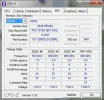Let's keep on updating drivers that need it. It can only do some good or actually fix the issues.
This will update your Realtek lan driver to June 4, 2010
Code:
Rt64win7 Rt64win7.sys Thu Aug 20 12:05:06 2009
Link Removed
Then visit this link for your motherboard:
Link Removed
While there, download and install the latest Chipset and USB 3.0 drivers too. There's even a new bios you can flash to, which would be good. (Only for bios, make sure you have the same revision motherboard. Go to the correct page if not. The drivers will be the same, however.)
-------
I have a guess of my own here that this driver may be posing an issue:
Code:
athrx athrx.sys Wed Jul 08 20:49:13 2009
It is a driver for your wireless lan (network) card. Dlink.com does not have any later driver as this is already the latest. You can try removing the card itself while powered off as a last resort kind of thing to see how it goes without it.
-------
The latest crash has actually involved CCC.exe which is the Catalyst Control Center for the ATI video card. It does not definitively mean that it was the cause, but could be at least partially responsible. I'd make sure there is no overclocking going on and that the card is running within spec with relation to heat.
If all else fails, I would use Driver Sweeper from Guru3d.com to completely remove everything ATI it can find. Then, download the latest driver from game.amd.com to install again. But this time, do not install the normal way. Install through the device manager and leave CCC off.
Here's how:
Run the .exe to extract the driver to C:\ATI
Close the installer immediately after extraction is completed to there. Do not let it install any longer in any way.
Open the device manager. Right click on the video card. Choose update driver software. Browse my computer. Let me pick. Have disk. Browse.
Then navigate to the folder inside C:\ATI which has the .infs. Double click on the one with CL in its name then hit ok. Hit next and it will install.
-------
If you still have problems after even doing this, then I would test the memory modules with only one stick installed at a time using Memtest86+.
Multiple passes will be necessary. If any show even one error, then that stick is no good and should be returned to the manufacturer for replacement.
While dealing with memory, it would be good to use CPU-Z to check which exact modules are in use. Then visit the manufacturer's site for the voltage it should be set at. Adjust you bios manually for the voltage with what you find. It may require more power.
Good luck and please keep us updated.

